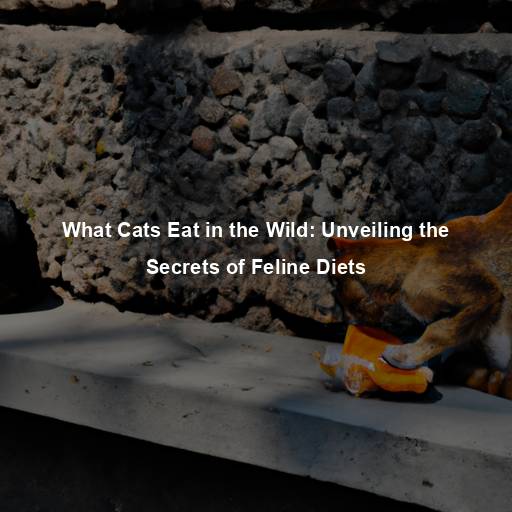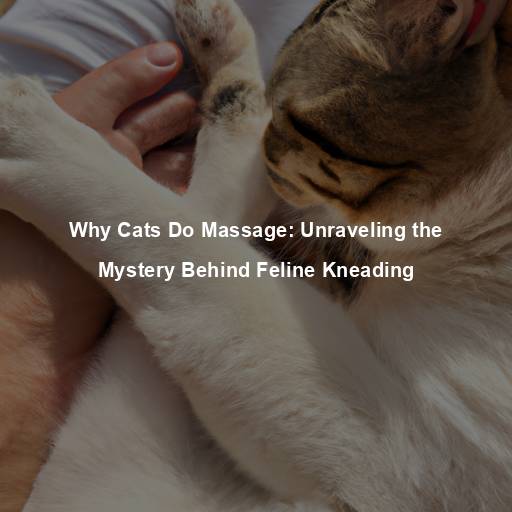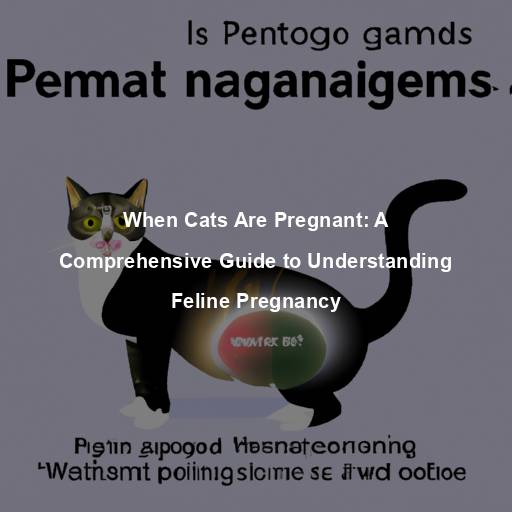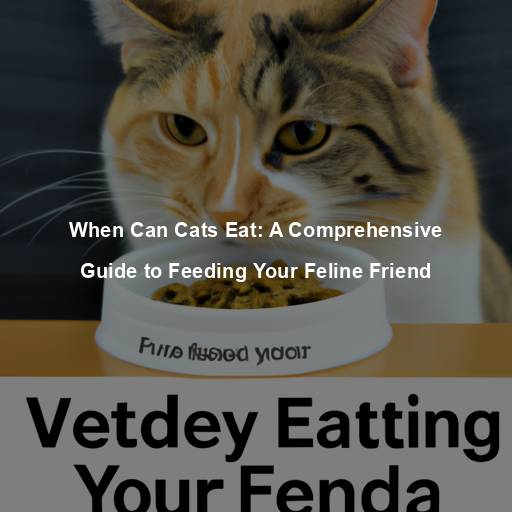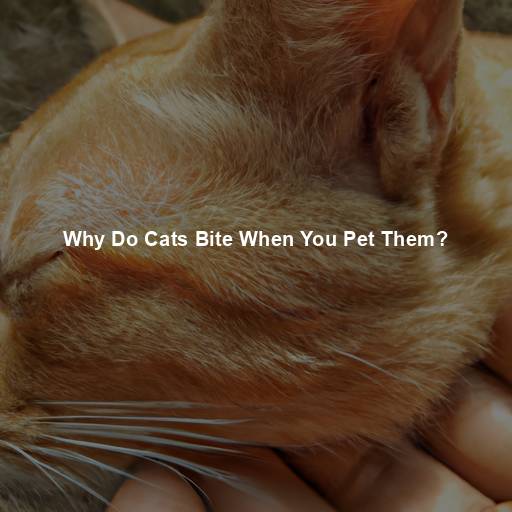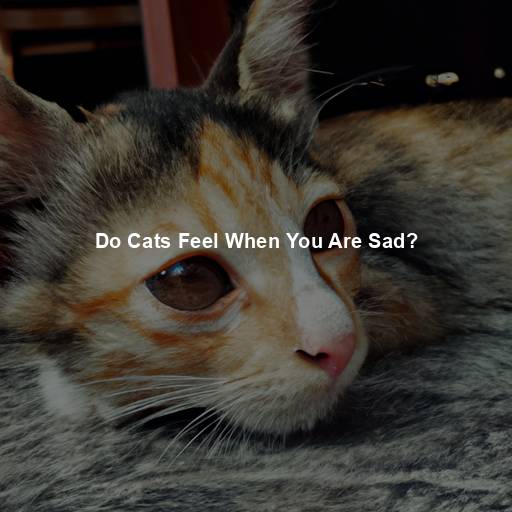What Cats Eat in the Wild: Unveiling the Secrets of Feline Diets
Last Updated on August 5, 2023 by Evan
Contents
- 1
- 2 Understanding the Wild Ancestry
- 3 The Components of a Feline Diet
- 4 The Natural Prey: A Balanced Menu
- 5 The Dangers of Free-Feeding
- 6 Meeting Nutritional Needs in Captivity
- 7 FAQs: What Cats Eat in the Wild
For centuries, the enigmatic allure of cats has held humans captive, their fiercely independent spirit captivating hearts worldwide. These beloved companions bring boundless delight and unwavering companionship. Yet, amidst the reverie they inspire, have you ever found yourself perplexed by the enigma of their wild appetites? In the pages that follow, we embark on a journey into the recesses of feline gastronomy, unraveling their clandestine culinary inclinations and the primal nutritional cravings that fuel their innate hunting prowess.
Understanding the Wild Ancestry
The Evolutionary Journey
Cats, as we know them today, have evolved from their wild ancestors. The domestic cat, scientifically known as Felis catus, shares a common lineage with species such as the African wildcat (Felis lybica) and the European wildcat (Felis silvestris). These wildcats are skilled hunters, and their diet consists mainly of small mammals, birds, reptiles, and insects.
The Hunter’s Instinct
It’s truly fascinating how the primal instinct of hunting courses through the veins of our beloved feline companions. While they may have relinquished a few wild traits along the way, their insatiable yearning to chase and catch prey still burns brightly. Delving into the intricacies of a cat’s natural diet allows us to seamlessly craft a well-rounded and wholesome menu for these enigmatic creatures who grace our lives.
The Components of a Feline Diet
Animal Protein: The Foundation
When it comes to feline nutrition, it’s essential to understand that cats are obligate carnivores. This fancy term simply means that their bodies crave animal protein to truly flourish. In the wild, their primal instincts kick in as they satisfy their protein needs by feasting on the juicy flesh of their prey. It’s worth noting that animal protein plays a vital role in providing the necessary amino acids, those tiny superheroes that help build and maintain healthy muscles, organs, and tissues.
Fats: Energy and Essential Nutrients
Fats play a crucial role in a cat’s diet, providing a concentrated source of energy. In the wild, cats consume fat-rich portions of their prey, such as the organs and fatty tissues. Fats also aid in the absorption of fat-soluble vitamins and support healthy skin and coat.
Carbohydrates: Limited Role
Cats, fascinating creatures of the animal kingdom, possess a unique trait that distinguishes them from their human counterparts and other remarkable animals. Unlike our diverse digestive systems, these enigmatic felines possess a captivating limitation when it comes to their ability to digest and utilize carbohydrates. In the untamed wilderness, where survival hangs in the balance, these remarkable hunters prioritize the pursuit of protein and fats, granting the elusive carbohydrate intake a mere whisper in their culinary agenda.
Water: The Elixir of Life
Cats, in their enigmatic nature, rely on the elixir of life, known as water, for their survival, both amidst nature’s wild tapestry and in the haven of domesticity as beloved pets. These majestic creatures possess an intriguingly low thirst drive, their ancestral instincts leading them to quench their moisture needs from the bounty of their prey. Thus, as stewards of these furry companions, it falls upon us to exhibit utmost responsibility by offering a steady stream of refreshment, in the form of pure and revitalizing water, to safeguard their well-being and maintain their optimal hydration levels.
The Natural Prey: A Balanced Menu
Small Mammals: A Staple Diet
In the untamed world, feline creatures find solace in a scrumptious array of tiny creatures like mice, rats, and rabbits, transforming them into a delectable feast. These nimble prey, with their delectable meat, rich fats, and vital nutrients, offer a veritable cornucopia of sustenance for our beloved feline friends.
Birds: A Feathered Feast
Birds are another common prey for wild cats. They offer a good source of protein, fats, and vitamins. Cats showcase their natural hunting skills while stalking and capturing birds, engaging their physical and mental prowess.
Reptiles and Insects: A Supplemental Treat
In the untamed world of feline feasts, it’s not just the usual suspects like small mammals and birds that make for a delectable spread. Prepare to be astonished, for reptiles and insects have been known to tantalize the taste buds of our wild cat companions as well. Adding a dash of perplexity to their diet, these curious creatures offer a bountiful buffet of nutritional diversity, ensuring our feline friends thrive in the most extraordinary of ways.
The Dangers of Free-Feeding
The Natural Feeding Pattern
In the wild, cats are opportunistic hunters, consuming multiple small meals throughout the day. This feeding pattern aligns with their anatomy and physiology, promoting efficient digestion and energy utilization.
The Pitfalls of Free-Feeding
Free-feeding, where food is available all day, can lead to overeating and obesity in domestic cats. It is essential to establish a feeding routine that mimics their natural feeding pattern, offering portioned meals at specific times.
Meeting Nutritional Needs in Captivity
Commercial Cat Food: A Convenient Option
For many cat owners, commercial cat food provides a convenient and balanced solution to meet their pet’s nutritional needs. Look for high-quality cat food brands that prioritize animal protein as the primary ingredient, avoiding fillers and artificial additives.
Homemade Diets: Proceed with Caution
For those who take pride in being purrfect pet parents, the idea of whipping up a homemade feast for their feline friends might sound like a whisker-licking good time. But before diving paws-first into the world of DIY cat cuisine, it’s crucial to tread with caution. Crafting a well-balanced plate that meets all of our furry companions’ nutritional needs requires a delicate dance, where guidance from a knowledgeable veterinarian or a skilled veterinary nutritionist is the key to unraveling this perplexing puzzle of pet sustenance. So, if you’re ready to don your chef’s hat and embark on a culinary adventure that’s sure to leave both you and your whiskered companion satisfied, just remember to approach it with the utmost care and precision.
Raw Diets: A Controversial Debate
It’s no secret that raw diets, commonly referred to as “BARF” (Biologically Appropriate Raw Food) diets, have become quite the talk of the town among devoted pet enthusiasts. Advocates strongly argue that these diets are in tune with a feline’s natural eating habits, highlighting the potential health benefits. On the flip side, skeptics raise a valid point as they voice their concern regarding potential bacterial infections and nutritional imbalances that might arise from such a dietary choice. However, with so much ambiguity surrounding this topic, it is highly advisable to consult a qualified veterinarian before embarking on any dietary changes for your beloved feline friend.
The Importance of Essential Nutrients
Feeding our feline friends is no simple task. In order to ensure that our beloved whiskered companions are thriving, we must delve into the bewildering world of their nutritional requirements. Let us embark on this insightful journey, exploring the pivotal role of key nutrients that make up the complex puzzle of a cat’s diet. From the enigmatic sources of protein to the enigmatic balance of vitamins and minerals, we shall navigate through the perplexing realm of feline nutrition, ensuring that we unlock the secrets to keeping our cats vibrant and full of life.
Taurine: A Vital Amino Acid
When it comes to feline well-being, there’s one mighty amino acid that takes center stage – taurine. This powerful force is no ordinary compound, as it holds the key to impeccable vision, a blissful heart, and optimal reproductive health for our beloved furry friends. Here’s the twist: cats can’t whip up enough of this magic potion naturally, making it absolutely essential to nourish them with taurine-rich diets. Prepare to unravel the puzzling importance of taurine in the enchanting world of our whiskered companions!
Vitamin A: For Vision and Immune Health
Maintaining optimal vision and a strong immune system is crucial for our feline friends, and vitamin A plays a vital role in achieving just that. In their untamed habitat, cats rely on the liver of their prey to fulfill their vitamin A needs. Nevertheless, given the diverse range of commercial cat foods available, many of them are thoughtfully fortified with this essential nutrient to ensure our beloved feline companions are getting their recommended daily intake.
Omega-3 Fatty Acids: For a Healthy Coat and Joints
Discover the remarkable wonders of omega-3 fatty acids, the secret superheroes for your kitty’s skin and coat health. Unleash the power of EPA and DHA, the dynamic duo that not only nourishes their fur but also possesses magical anti-inflammatory properties, safeguarding their precious joints. Dive into the ocean of fish oil supplements or explore the world of specially crafted cat foods to embark on an extraordinary journey towards your feline friend’s well-being.
Understanding Cat Food Labels
Decoding the enigmatic hieroglyphics that adorn cat food labels is vital for pet parents who desire to unravel the culinary secrets behind their feline friend’s sustenance. Let us embark on a perplexing expedition through the maze of nutrient ratios, mysterious ingredients, and cryptic certifications to unlock the arcane knowledge necessary for making nourishing choices. While many may feel disoriented by the plethora of seemingly baffling details, fear not, for we shall navigate this puzzling terrain and emerge triumphant, armed with the enlightenment required to provide our precious whiskered companions with the nourishment they truly deserve.
Ingredient List: The Foundation
When it comes to deciphering the mysteries behind the cat food aisle, the key lies within the tantalizing ingredient list. Harnessing the power of informed pet parenting, one should navigate towards the celestial realms of high-quality animal protein, resting high and mighty atop the list; think succulent chicken, resplendent turkey, and the aquatic wonders of fish. However, beware the treacherous pitfalls lurking in the shadows, for excessive fillers, mysterious by-products, or the dark arts of artificial additives shall simply not pass muster.
Guaranteed Analysis: Nutrient Breakdown
When it comes to deciphering cat food labels, the guaranteed analysis section holds the secrets to your feline friend’s nutritional needs. Keenly observe the protein and fat content, ensuring they hit the mark in meeting your kitty’s recommended levels. Seek out those delectable delights that boast a harmonious blend of vital nutrients, providing the perfect balance for your discerning cat.
Feeding Guidelines: Serving Sizes
Feeding guidelines on cat food labels provide recommended serving sizes based on a cat’s weight. It is crucial to follow these guidelines and adjust portions as needed to maintain a healthy weight for your cat. Remember, individual cats may have varying caloric needs.
Special Considerations for Kittens and Senior Cats
Different life stages require specific nutritional considerations for cats:
Kittens: The Growing Phase
When it comes to our adorable furballs known as kittens, it’s important to understand that their energy and nutritional needs differ from those of adult cats. To ensure their optimal growth and development, it is crucial to opt for specially designed kitten formulas that offer the perfect balance of protein, fats, and essential vitamins and minerals. Remember, feeding them multiple small meals throughout the day will provide the necessary support they need on their fuzzy journey of growth.
Senior Cats: Aging Gracefully
Senior cats have unique nutritional needs as they age. They may require fewer calories to prevent weight gain while needing additional support for joint health and maintaining muscle mass. Look for senior cat formulas designed to address these specific needs.
The Impact of Lifestyle and Health Conditions
When it comes to cats, their unique lifestyle and health factors play a significant role in determining what they need nutritionally. Taking various aspects into account will help ensure their well-being.
Indoor Cats: Less Activity, Controlled Diet
When it comes to our feline friends, it’s no secret that indoor cats tend to lead more sedentary lives than their outdoor counterparts. This difference in lifestyle means that indoor cats often require fewer calories to maintain a healthy weight. To address this unique dietary need, it’s important to select cat food formulas that are specifically tailored for our indoor companions, typically featuring lower calorie content and specialized formulas for hairball control.
Weight Management: Maintaining a Healthy Weight
Cats and their weight – an enigmatic saga that often perplexes many pet owners. The epidemic of obesity among these graceful creatures poses a myriad of health concerns, compelling us to delve deeper into their well-being. Should you find your feline companion struggling with excess weight, it is imperative to embark on a consultative journey with a trusted veterinarian. Together, you can unravel the conundrum of portion control, chart a course towards a balanced diet, and embark on a thrilling adventure of regular exercise, ensuring your beloved pet’s vibrant vitality.
Health Conditions: Dietary Modifications
As feline aficionados, we understand that our furry friends sometimes grapple with unique health challenges. Take, for instance, our whiskered companions who experience urinary tract troubles, seeking solace in a specialized dietary approach. Collaborating closely with a trusted veterinarian, you can navigate the labyrinthine path towards tailoring a purr-fect meal plan tailored to your cat’s specific needs – a unison of furry grace and medical expertise.
FAQs: What Cats Eat in the Wild
What do cats eat in the wild?
When it comes to dining preferences, cats are true connoisseurs of the carnivorous variety. Their taste buds are wired to savor the succulent essence of meat, making it the heart and soul of their diet. With a keen eye and nimble paws, they embark on daring hunting expeditions, seeking out the finest delicacies in the form of tiny rodents, feathered flyers, and even minute insects. Equipped with teeth built for tearing and a digestive system finely tuned for raw meat consumption, cats exemplify the epitome of nature’s grand design.
Do wild cats eat plants or vegetables?
While cats are primarily carnivores, they occasionally consume small amounts of plant matter in the wild. This usually occurs when their prey has already consumed vegetation. However, cats lack certain enzymes necessary to digest plant matter efficiently. Therefore, their requirement for plant-based food is minimal compared to their need for animal protein.
Are wild cats capable of hunting larger prey?
In the untamed realms of nature, feline marvels embody the epitome of predator prowess, effortlessly conquering quarry that rival their own stature. These versatile creatures, adorned with sleek coats and keen instincts, masterfully pursue and seize unsuspecting victims such as rabbits, hares, and yes, even diminutive deer. Their remarkable dexterity, swiftness, and heightened senses converge harmoniously to orchestrate the perfect hunt.
What other types of animals do wild cats eat?
Wild cats have a diverse diet that includes a wide range of small to medium-sized animals. Apart from rodents and birds, their prey may also include reptiles, amphibians, fish, and even other small mammals. They are adaptable hunters and will consume whatever is available in their environment.
How often do wild cats eat?
In the untamed realm of wild cats, the delicate dance of hunting success reveals a captivating variety. Unlike their domestic counterparts, these majestic creatures eschew the confines of a rigid feeding schedule. Instead, they epitomize fluidity, indulging in numerous petite repasts that punctuate both daylight and moonlit hours. Yet, their feasting habits remain entangled in the enigmatic web of their surroundings, their nourishment contingent upon the interplay of prey’s abundance and accessibility.
Can wild cats eat other animals’ leftovers?
Yes, wild cats are opportunistic feeders and will scavenge on the remains of other animals’ kills. They are capable of utilizing any available source of food, including carcasses left behind by larger predators or animals killed by natural causes. This scavenging behavior helps them survive during times when hunting might be challenging.
Do wild cats need water to survive?
While wild cats obtain some of their moisture from the prey they consume, they still require a separate water source for hydration. They might drink from streams, ponds, or other natural water sources. In arid environments, they have adapted to conserve water efficiently, but access to fresh water remains essential for their survival.

